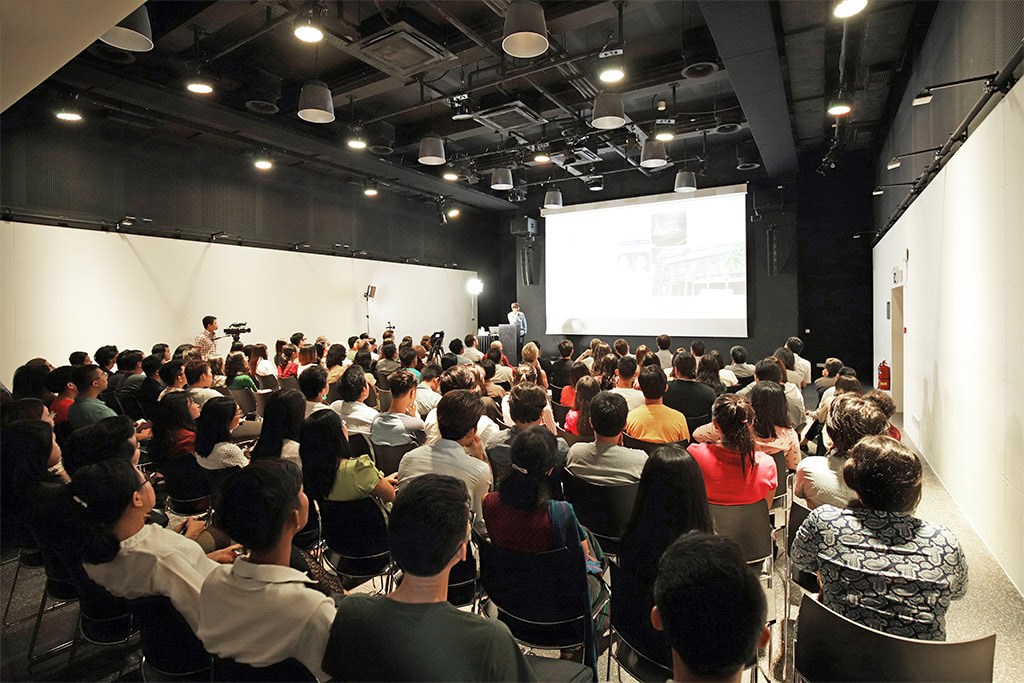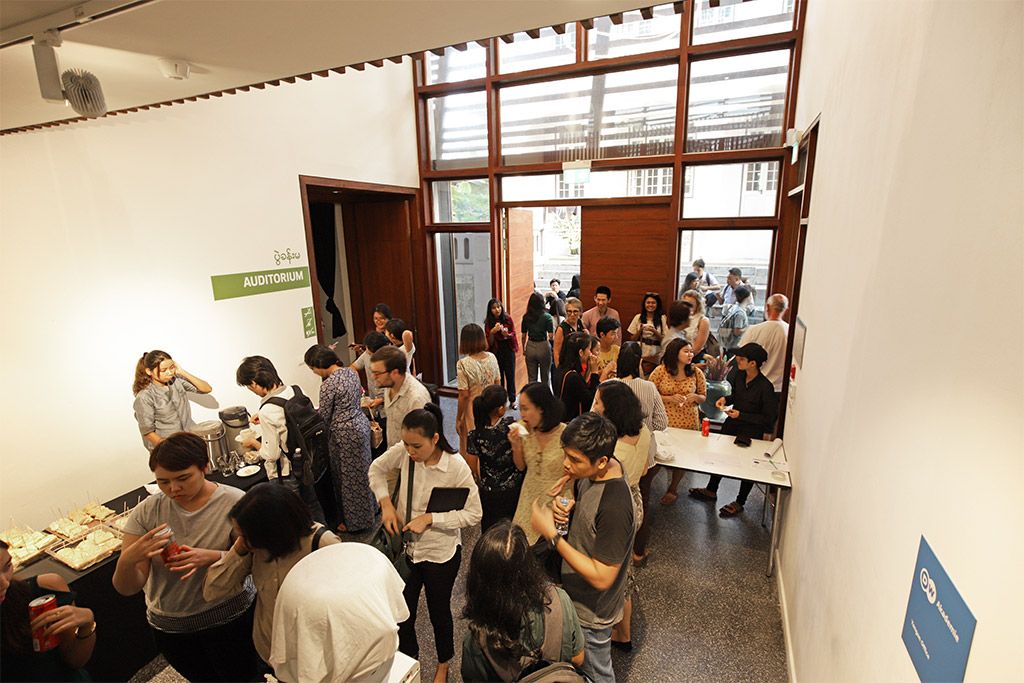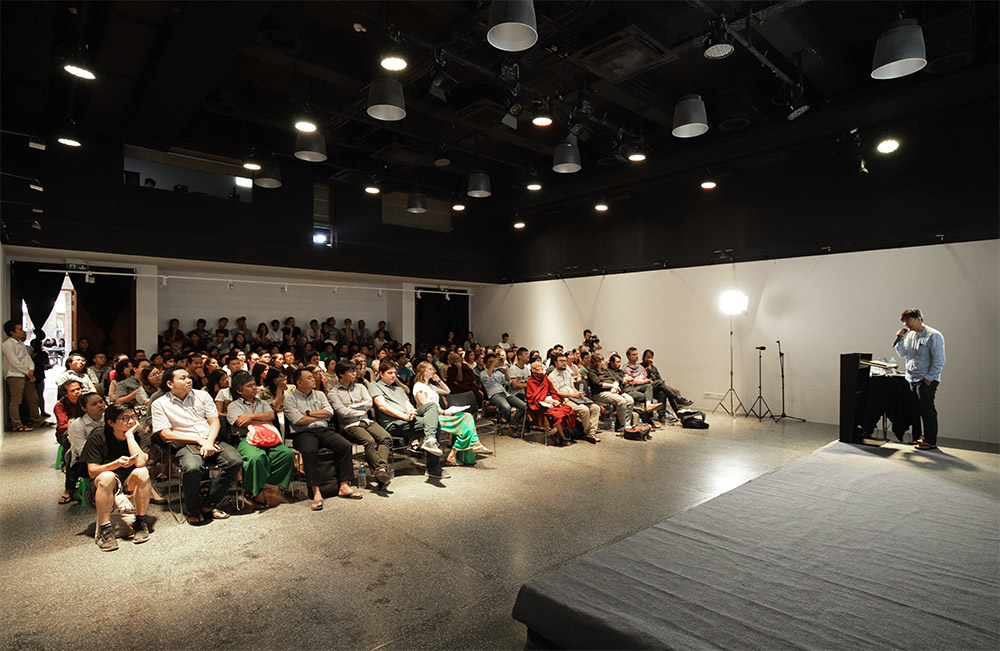
More than 150 guests accepted the invitation to the lecture day at Goethe-Institut Myanmar on the day after the opening of the exhibition. At the second event held at the SEAM Space Yangon, guests from abroad and lecturers from Myanmar shared exciting and varied insight into their work.
The afternoon was divided into two blocks. The first block was reserved for guest speakers from abroad, while in the second block speakers from Myanmar talked about their work in the context of the discussion on modernism. The first block was opened by Ben Bansal, economic consultant from Tokyo, Japan with his lecture “Benjamin Polk and Raglan Squire – two architects in post-independence Myanmar“.
Ben Bansal called Myanmar a “concrete battleground of ideologies“ after independence where the United States and Soviet Union superpowers fought out their interests. This fate was shared by Cambodia and other countries after their transition to independence, and which led to severe disruptions in many places. In his lecture, Bansal focused on two architects and their buildings in Yangon, as a symbol of the country’s awakening after independence. He also addressed the role of two foreign architects in the process of nation building: British architect Raglan Squire and his Rangoon College of Engineering, completed in 1954, and Benjamin Polk, his American counterpart, who completed the Buddhist Library in Yangon in the late 1950s. Both buildings show, albeit in very different ways, the attempt to combine ideas of international modernism with elements of local, tropical architecture. Rangoon College of Engineering certainly had a formative influence on the country’s architecture in the period that followed, as the first generation of local architects was trained there from 1954 onwards.
Sereypagna Pen, an architect and urban researcher and one of the two curators of the SEAM Space Phnom Penh, introduced the development of modernism in Cambodia with his lecture “Cambodia’s Modern Movement from 1918 to 1970”. His presentation on this historical development – which also included, for example, painting – considered different approaches before and after independence and also considered current urban developments against this backdrop.
Setiadi Sopandi, an architect, curator, and architectural scholar from Bogor, Indonesia, gave an extensive introduction to the history of modern architecture in Indonesia, which already began with buildings by the Dutch colonial power.

After the break, Brian Win Thant Win Shwin, one of the curators of the SEAM Space Yangon, explained in his lecture that, for him, the work on the project is the beginning of a longer, collaborative process dealing with the development of modernity in Myanmar. An insight into the theses behind the idea of a “Synthesis of Myanmar Modernity” rounded out the lecture.
The title of Aung Soe Paing’s lecture was “Modernisation of Design Education”. The founder of the private Yangon School of Interior Design – the first and only school for interior design in Myanmar – showed a series of student works that vividly illustrated the interdisciplinary and open working process at the school.
Chuu Wai Nyein, an artist from Myanmar, addressed the role of women in art and society in the context of “modern” Myanmar in an impressive lecture underscored by her own paintings. The development and modernization of the country, she explained, is like a train that always moves forward, but unfortunately women are still not on this train today, according to her thesis. She was just as critical of the role of architecture in the country’s development as she was of the development of feminism in Myanmar, which she compared directly. Both architecture and the feminist movement should not simply adopt models from the West but should rather find their own approach that reflects Myanmar’s identity and refers to specific issues.
The concluding panel discussion addressed, among other things, the emancipation process after independence, which was mentioned in some of the lectures, and the related topic of a possible new national identity – which, in view of the country’s opening up, is also being raised again today.

